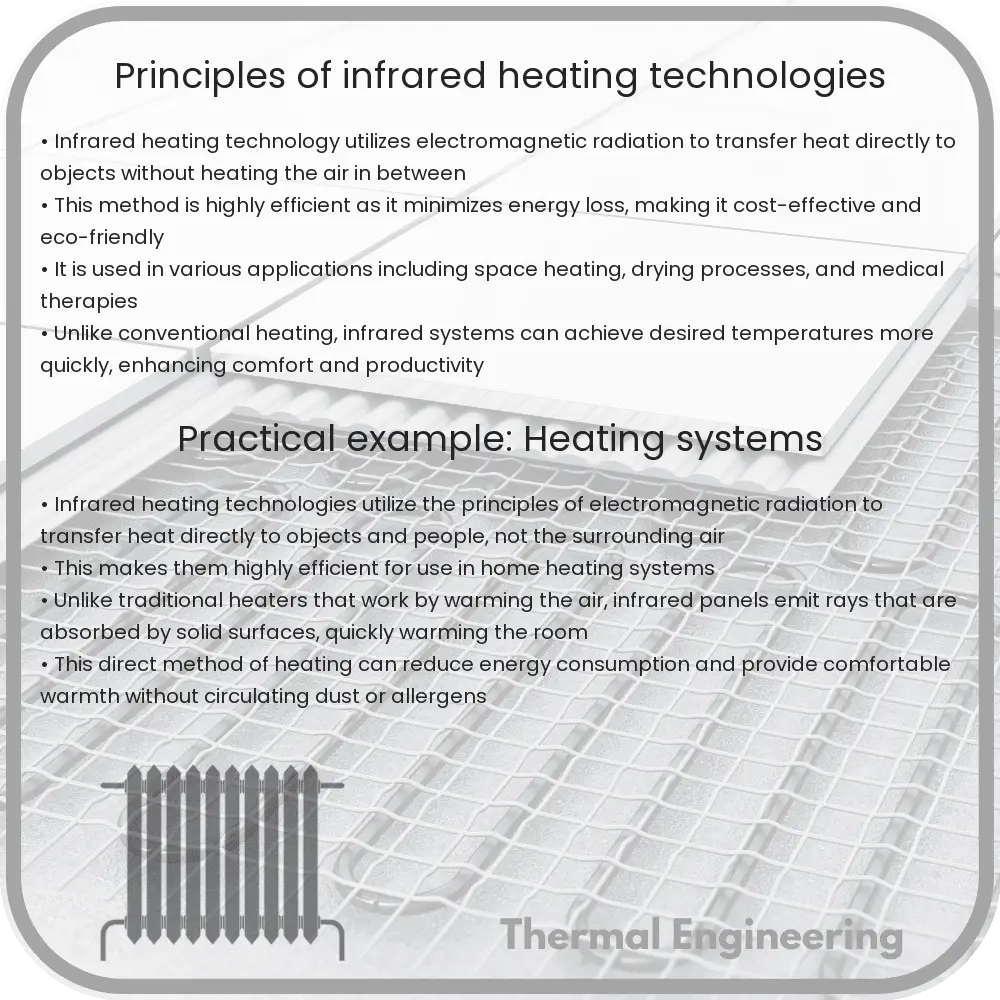Learn about infrared heating technologies, efficient systems that use electromagnetic radiation to provide direct and eco-friendly heating solutions.

Introduction to Infrared Heating Technologies
Infrared heating technology is a method that uses infrared waves to deliver heat directly to objects, materials, or spaces without needing to heat the air around them. This technology harnesses the principle of electromagnetic radiation. Infrared heaters, commonly found in various industrial and residential applications, provide an efficient and direct method of heating, which can be both cost-effective and eco-friendly.
Basic Principles of Infrared Heating
At its core, infrared heating is based on electromagnetic spectrum radiation where the wavelength falls just beyond the visible light spectrum, between roughly 780 nm to 1 mm. This range is classified into three types: near-infrared, mid-infrared, and far-infrared. Infrared heaters utilize this radiation to transmit heat directly to objects through electromagnetic waves without directly heating the air.
- Near-Infrared (Short-wave): Ranging from 780 nm to 1.4 μm, this type of infrared is also known as short-wave infrared heating and offers high energy that is useful for intensive heating applications.
- Mid-Infrared: Mid-range in wavelength from 1.4 μm to 3 μm, it is suitable for cooking and heating in both industrial and domestic environments.
- Far-Infrared (Long-wave): With wavelengths from 3 μm to 1 mm, far-infrared is more gentle and is used in residential heating systems and saunas.
How Infrared Heaters Work
Infrared heaters operate by converting electricity into radiant heat. This conversion is achieved through the use of a filament (commonly made of tungsten), which is heated electrically to emit infrared radiation. This radiation then travels through the air until it strikes an object or surface, directly heating it. The process does not rely on convection, unlike traditional heating methods, which typically warm up the air. This aspect allows infrared heating to be more efficient, particularly in well-ventilated areas or outdoors.
Advantages of Infrared Heating
- Energy Efficiency: Infrared heaters can convert over 90% of energy consumed into radiant heat. They waste less energy compared to other heating systems that mainly heat the air.
- Instant Heating: Infrared technology provides nearly instantaneous heat, without the warm-up time required by other types of heaters. It is ideal for rapid comfort.
- Targeted and Uniform Heating: These heaters can target specific zones and distribute heat uniformly, reducing the occurrence of cold spots.
- Reduced Allergen Circulation: Since these heaters do not rely on circulating air, they minimize the disturbance of dust and allergens.
- Eco-Friendly: Direct conversion of energy to heat reduces carbon emissions, making infrared technologies an environmentally friendlier choice.
Applications of Infrared Heating
Infrared heaters find widespread use across various sectors. In industrial settings, they are used for processes like drying paint, curing polymers, and processing glass and metals. In commercial and residential scenarios, they serve as efficient space heaters, patio heaters, or even in cooking appliances. Health-related applications include muscle relaxation in therapeutic devices and even in incubators for neonatal care.
Conclusion
Infrared heating technology showcases a fine example of how principles from physics can be ingeniously applied in engineering to improve efficiency and performance in everyday life and industrial processes. As advancements continue, the potential applications and efficiency of infrared heating systems are expected to expand, bringing more tailored and sustainable heating solutions to various industries and homes.